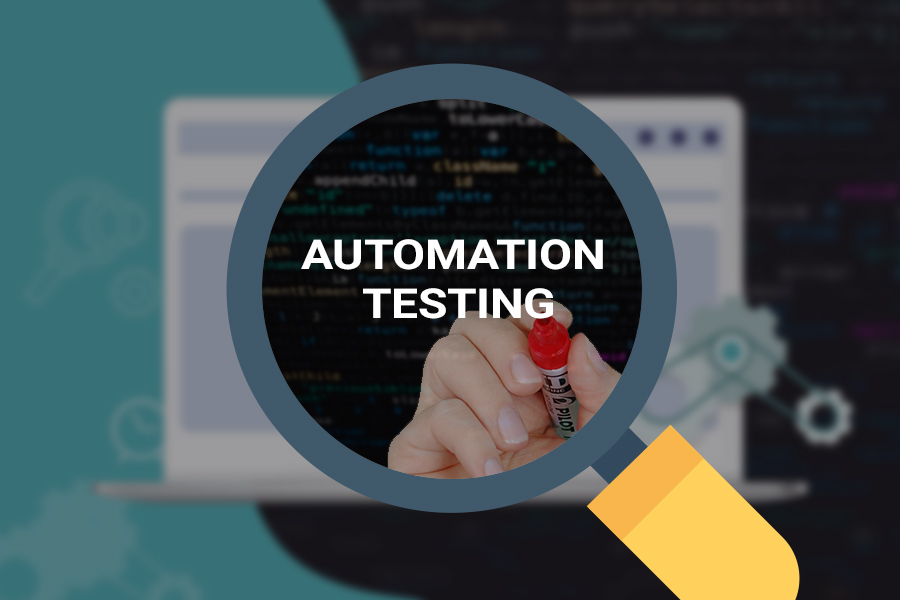Picking the Right Tools for Effective Automation Testing Solutions
Wiki Article
From Handbook to Automated Testing: A Comprehensive Overview to Transitioning Smoothly and Properly
In the world of software program testing, the change from handbook to automated processes has actually ended up being an increasingly important transition for companies looking for to boost efficiency and precision in their screening methods. The trip from manual to automated screening is not without its difficulties, however when approached strategically and with a clear strategy in mind, the benefits can be considerable.Advantages of Automated Checking
Automated testing uses various benefits, boosting effectiveness and precision in software application growth processes. One main advantage is the significant decrease in testing time. Automated tests can be run all at once on several tools and operating systems, significantly quickening the screening phase compared to hand-operated screening. This increased performance allows for faster comments on the high quality of the software, enabling designers to recognize and resolve issues without delay.Additionally, automated screening makes certain a greater degree of accuracy in discovering flaws. Since automated examinations follow predefined manuscripts, human mistake is minimized, leading to more reputable test results. Consistency in testing is also improved, as automated tests execute the same steps precisely each time they are run. This consistency is critical in making certain that all capabilities of the software program are thoroughly tested, reducing the likelihood of undetected pests sliding with to production.
Selecting the Right Devices

To start with, assess your objectives and requirements. Comprehend the extent of your project, the modern technologies entailed, and the capability of your group. This analysis will certainly aid you establish the functions and abilities you call for in your screening tools.
Secondly, take into consideration the compatibility of the devices with your existing systems and procedures. Smooth assimilation with your present software application advancement lifecycle is important to guarantee a smooth transition to automation.
In addition, examine the scalability and versatility of the tools. As your screening needs evolve, the devices should be able to adapt and suit modifications efficiently.
Lastly, consider the support and area around the tools. Durable support and an active individual area can supply important sources and support when implementing automated screening. By carefully considering these facets, you can select the right devices that align with your demands and set the phase for a successful shift to automated screening.
Composing Reliable Test Scripts

When crafting examination scripts, it is vital to think about the specific demands of the software being examined and guarantee that the manuscripts deal with all critical capabilities. Detailed and clear naming conventions for test manuscripts and test situations can enhance readability and maintainability. Furthermore, incorporating error handling devices within the test manuscripts can help in determining and addressing problems without delay.
Additionally, arranging examination scripts right into modular parts can improve reusability and scalability, lowering redundancy and enhancing performance in examination manuscript upkeep. Regular evaluations and updates to test scripts are critical to equal progressing software program requirements and performances. By complying with these concepts, testers can create reliable and robust test scripts that add considerably to the success of automated screening processes.
Integrating Automation Into Workflows
By flawlessly integrating automated testing devices like Selenium or Appium into the software growth lifecycle, teams can attain faster responses on code adjustments, leading to quicker pest discovery and resolution. This integration permits for constant testing throughout the advancement process, making sure that any problems are recognized early on, resulting in higher software program quality. Appropriate combination of automation devices requires partnership in between development, screening, and procedures teams to establish a unified operations that optimizes effectiveness and performance in delivering top notch software products.Making Sure a Smooth Change
Successfully transitioning to automated testing entails meticulous planning and mindful implementation to lessen disruptions and optimize effectiveness in the software advancement procedure - automation testing. To make certain a smooth transition, it is crucial to start by carrying out an extensive analysis of the existing screening procedures and identifying areas where automation can bring one of the most substantial advantages. Engaging with all stakeholders early while doing so, consisting of programmers, testers, and task supervisors, is crucial for garnering support and buy-in for the automation initiativeCommunication is key during this transition phase. Clear interaction of the objectives, advantages, and expectations of automated testing assists to handle any kind of resistance or problems that might emerge. Additionally, offering sufficient training and resources for employee to upskill in automation tools and techniques is vital for guaranteeing an effective change.

Conclusion
To conclude, transitioning from manual to automated testing provides many advantages, consisting of boosted performance and integrity. By picking the appropriate devices, writing effective test scripts, and incorporating automation seamlessly into workflows, companies can make sure why not try these out a smooth and successful shift. It is essential to accept automation as a beneficial property in software program testing procedures to enhance overall top quality and productivity.In the world of software screening, the change from guidebook to automated procedures has actually become an increasingly essential transition for organizations seeking to enhance effectiveness and accuracy in their testing methods. Automated tests can be run concurrently on numerous tools and operating systems, substantially speeding up the screening phase contrasted to manual testing. Uniformity in screening is likewise improved, as automated examinations perform the same actions exactly each time they are run.To ensure the effective application of picked screening tools, the production of efficient examination scripts plays a crucial duty in verifying the functionality and efficiency of automated processes - automation testing. By complying with these principles, testers can produce effective and durable test manuscripts that contribute dramatically to the success of automated testing procedures
Report this wiki page